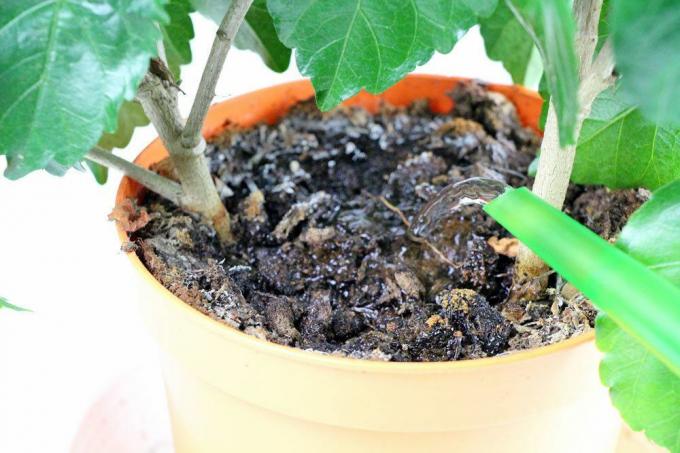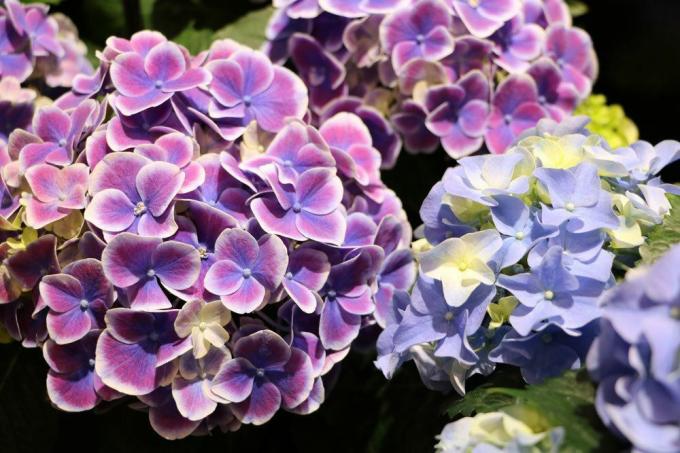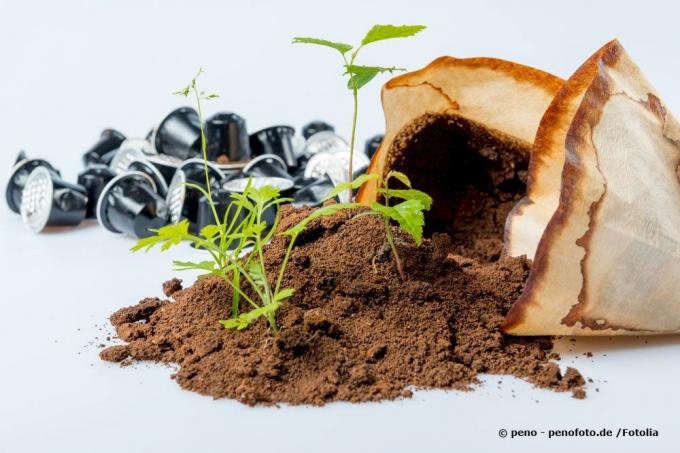
table of contents
- Hydrangea in a pot
- pot
- Earth
- Location
- to water
- Fertilize
- care
- Signs of unfavorable growing conditions
Hydrangea, better known by its German name hydrangea, is one of the classic garden shrubs. With a lush growth and imposing, hemispherical flower umbels, they have long been eye-catchers in countless ornamental gardens. For some time now, hobby gardeners have been increasingly using this decorative effect as a houseplant for their living spaces. Because with the right care, the hydrangea is indeed well suited for keeping in a tub and, under optimal conditions, will delight you with a flowering that lasts for several weeks.
Hydrangea in a pot
It is obvious that keeping a plant in a pot offers less scope in terms of development and expansion, but of course also available soil, nutrients and water. In addition, the simple "relocation" of a plant in the tub easily leads to the fact that the location - consciously or unconsciously - changed and possibly influenced in terms of its suitability will.
It is all the more important to be aware of the needs of a hydrangea in the living space in order to offer it optimal conditions despite, or perhaps because of its limited possibilities.
pot
So that the hydrangea also shows its magnificent flower dress in the room, the pot has to be right. You should pay attention to the following:
- Choose pot size depending on the size of the plant
- At least 3-5 centimeters of soil on all sides between the root ball and the pot as storage mass for water and nutrients
- Repot plants regularly in larger containers
- if there is no soil, there is insufficient moisture storage
- Provide a drainage layer made of clay granulate or a drainage mat at the bottom of the pot
- without a drainage layer, risk of waterlogging and root rot
Earth
The right pot is useless without the right substrate. Therefore, pay attention to the following points when choosing the earth:
- Avoid classic potting soil due to its high pH value
- Rhododendron resp. Azalea soil with an acidic soil environment and good water storage capacity is well suited as a substrate
- Even mixed substrate for hydrangea in the bucket is unsuitable, as the pH value can hardly be kept constant in the long term
tip: Acid soil is a basic requirement, especially for blue-flowering hydrangeas.
Location
The advantage of planting in a tub is the flexibility in choosing a location. The right location for the hydrangea in the room is as follows:
- Bright and with a lot of daylight
- Ideally in partial shade
- Optimal east and west side
- avoid full sun in a south-facing position
- bright north-facing locations are possible
- with full sun exposure in summer with suitable shading options
- if there is no shade, there is a risk of burns or Drying out of plants and soil
- Well ventilated so that excessive moisture can be easily ventilated immediately after watering
- if there is insufficient ventilation, there is a risk of mold in the root area
- Avoid accumulated heat in summer and the subsequent excessive drying out of the plant
to water
If the basic conditions are right, it is important to properly set up the hydrangea's supply. Because the best location in the ideal pot with suitable soil is of little use if the plant suffers due to insufficient supply of nutrients and water.
Hydrangea has one, not least because of its lush growth and magnificent flowers intensive water demand. At the same time, however, she feels just as uncomfortable with waterlogging as with dryness. Therefore, the lavish and at the same time moderate administration of water is of particular importance:
- If kept indoors, water intensively twice a week
- Alternatively: submerge the root ball in a bucket of water and then allow it to drain well
- Avoid very hard water, as calcium has a negative effect on the pH value and in the long run leads to yellow, chlorotic leaves
- Alternatively, water with rainwater or filtered water

Attention: If the hydrangea migrates to the balcony over the warm summer months, the plant's water requirement increases and must be compensated for by additional watering. The lush flowers and numerous leaves evaporate even more water outdoors than they already give off when they are kept in the room.
Fertilize
The experienced hobby gardener has various options for an optimally balanced supply of nutrients. First of all, the market offers chemical products that contain all the substances necessary for good growth and at the same time long and intense flowering. Common names here are hydrangea fertilizers, azalea fertilizers or rhododendron fertilizers. Special mixtures are also available to promote the blue coloration of blue flowering specimens. These fertilizers are added to the irrigation water regularly, usually every two weeks.
But there is also the possibility of using natural alternatives to provide the necessary nutrition for hydrangea:
- Spread deciduous or coniferous compost thinly on the potting soil to supply nitrogen and acid; to avoid unpleasant odors in the living space, only use compost that has been deposited over several years
- As a natural nitrogen supplier, work horn shavings or meal loosely into the potting soil once in the spring
- Apply coffee grounds or tea regularly, also at short intervals, to the earth, by pouring over them a good supply of minerals, and also has a positive effect on the acid balance of the soil
- Other nitrogenous substances such as banana peels etc., which are cut into small pieces and incorporated into the soil
Attention: Since the soil volume in the bucket is very limited, home remedies for supplying nutrients are effective, but not always sufficient. Therefore, a hydrangea in the pot should always be carefully monitored and, if necessary, supported by traditional fertilization with commercially available preparations.
tip: Since changes in the pH value in the soil occur quickly, but their effects are only recognized very late It is worth checking the soil regularly with pH test strips, which are inexpensive in stores are. Initially, the weekly check is recommended. Once there is a feeling for the soil behavior, the intervals can easily be extended.
care
Overall, the hydrangea is considered to be a comparatively easy-care companion if the framework conditions are right. However, various measures during care help to intensify the hoped-for blooming splendor and to strengthen its durability:
- Cut out faded inflorescences to stimulate new flower formation
- Repot plants at least every two years, as the soil is permanently leached despite fertilization and the balance of pH value and nutrients is increasingly difficult to maintain
- Wintering indoors is ideally in a cool, frost-free and dry place
- For example garage, winter garden or stairwell, make sure there is enough light and (less) watering
- During the hot summer months, consider alternative locations for the houseplant on the balcony or terrace, as this makes it easier to avoid accumulated heat behind window panes
- Support of the blue color of the flowers through a single application of aluminum alum before the onset of flower growth, approx. Dissolve 6 grams in the watering water and add in this way
- Increase the flowering time through cooler, unheated locations, especially overnight
Signs of unfavorable growing conditions
Even with great efforts to create the ideal environment for the hydrangea, individual aspects can always deviate from the optimum. These deviations are usually only visible when the plant has already been adversely affected. The following symptoms keep coming up and should prompt a quick reaction:
Drying up of leaves, premature drying up of flowers
- especially with insufficient water supply (dehydration)
- as well as in a sunny and hot location (burning of the plant components)
Yellowing of the leaves
- too high pH value (poor nutrient absorption)
- or consequence of root rot (waterlogging in the root area)
Low growth performance
- insufficient water or nutrient supply
Insufficient flower formation
- too high pH value (especially if the blue color is insufficient)
- or insufficient supply of nutrients, light or water (general deficiency symptoms)

tip: Since when the symptoms appear it is usually too late to prevent negative consequences for the plant, all essential Factors such as exposure and ventilation, nutrient supply and, above all, the pH value of the soil are regularly checked and adjusted if necessary will.


